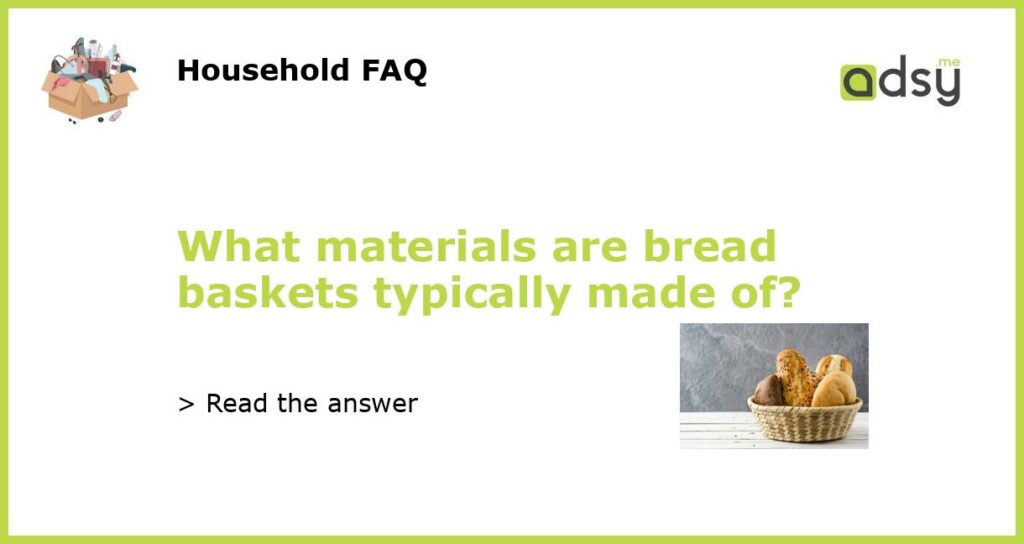Bread Baskets: A Brief Overview
Bread baskets are an essential tool for any bakery or restaurant. They are used to store and serve bread, rolls, and other baked goods. Bread baskets can be made from a variety of materials, each with its own benefits and drawbacks. In this article, we will explore the most common materials used to make bread baskets and their advantages and disadvantages.
Materials Used for Bread Baskets
The most common materials used to make bread baskets are metal, wicker, and plastic. Each material has its own unique characteristics that make it suitable for different uses.
Metal Bread Baskets
Metal bread baskets are a popular choice for restaurants and cafes. They are durable, easy to clean, and come in a variety of shapes and sizes. Metal baskets can be made from stainless steel, aluminum, or copper. Stainless steel is the most common material for metal bread baskets as it is sturdy and rust-resistant. Copper baskets are also popular due to their elegant appearance, but they can be expensive.
Wicker Bread Baskets
Wicker bread baskets are a traditional choice and are often used in homes and bakeries. They are made from woven natural fibers, such as willow or rattan. Wicker baskets are lightweight, easy to carry, and can add a rustic look to any table. However, they are not suitable for dishwasher or microwave use and can be challenging to clean.
Plastic Bread Baskets
Plastic bread baskets are a practical option for outdoor events or catering businesses. They are lightweight, easy to transport, and are available in a range of colors and styles. Plastic baskets are also dishwasher safe and can be reused many times. However, plastic baskets can be less durable than metal or wicker baskets and are not as visually appealing.






